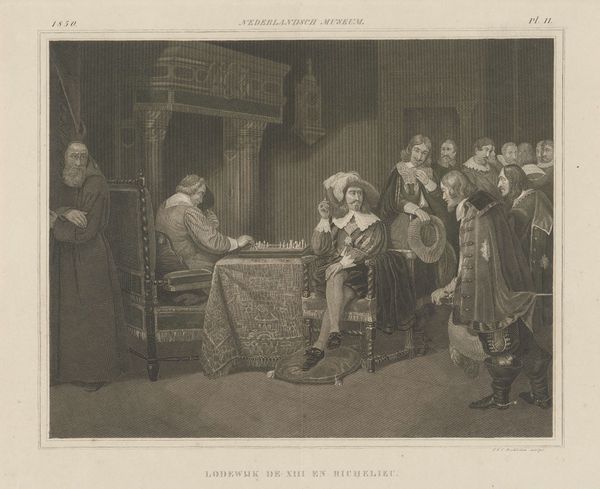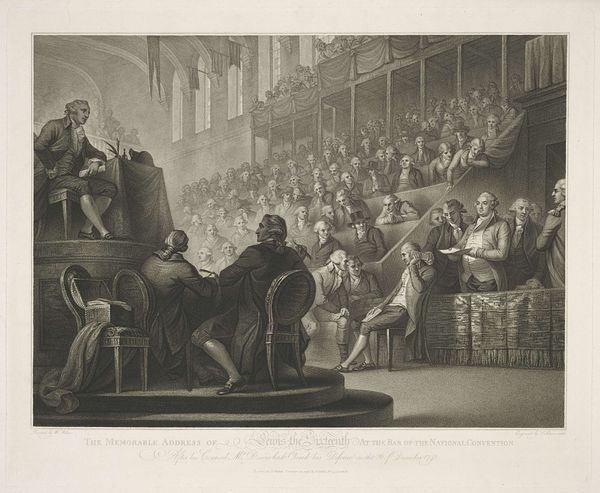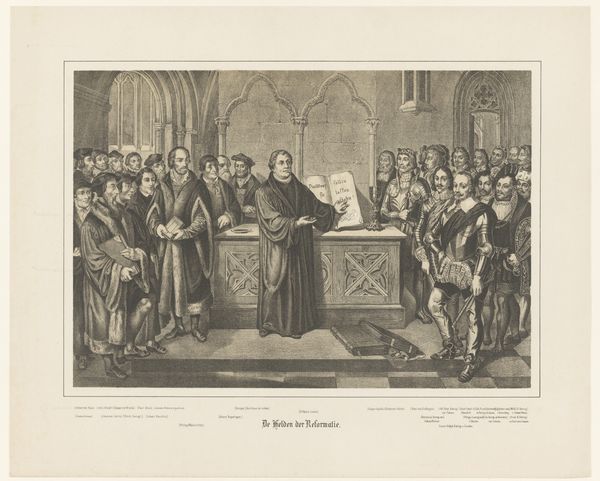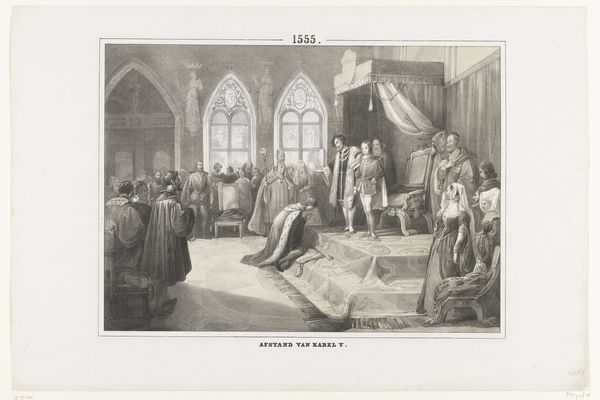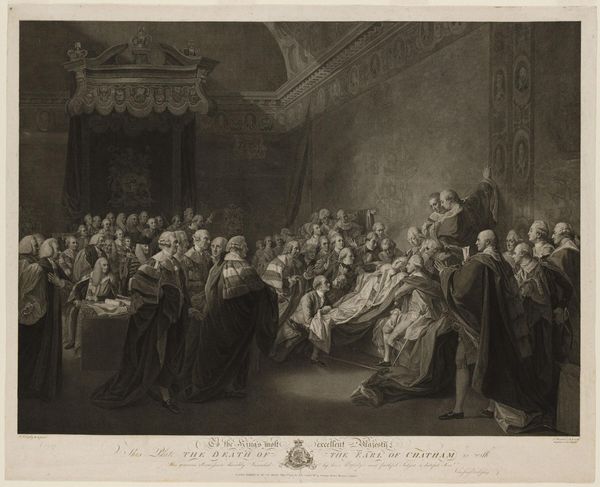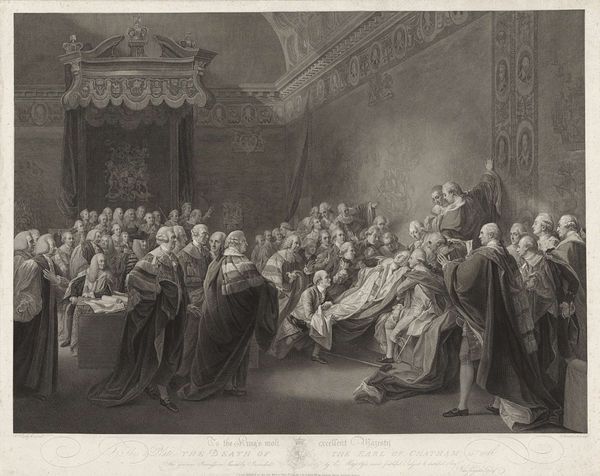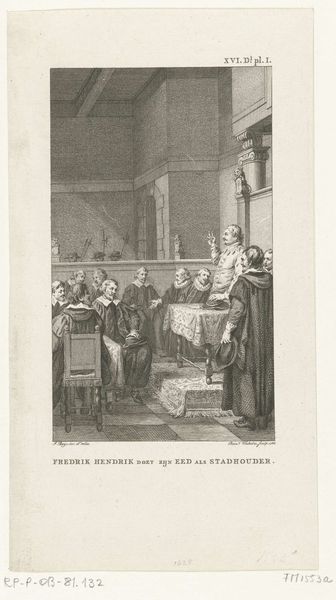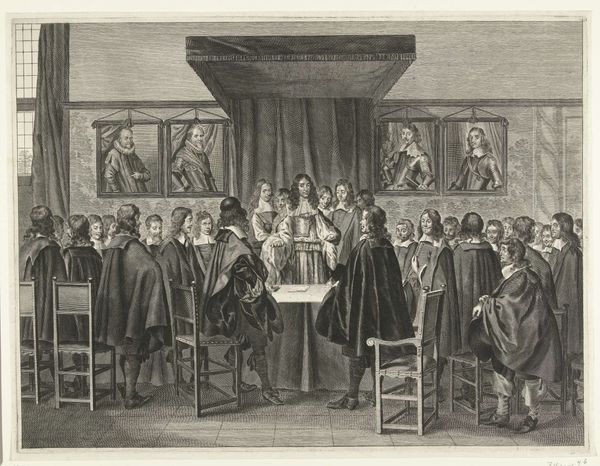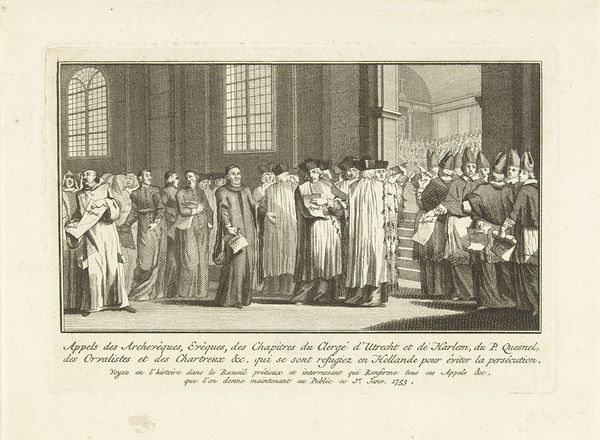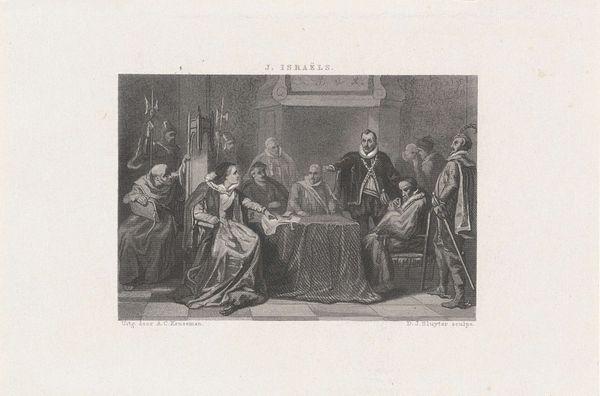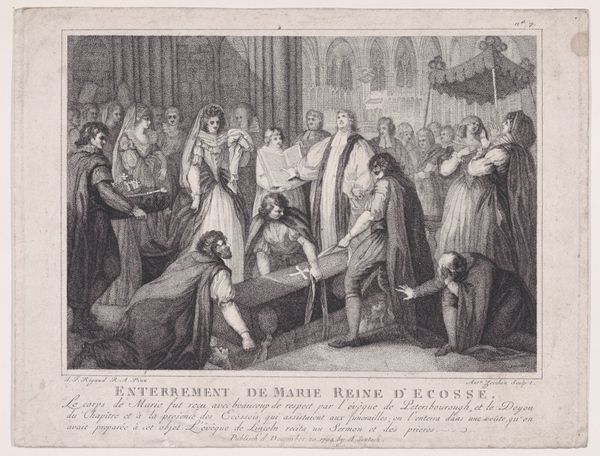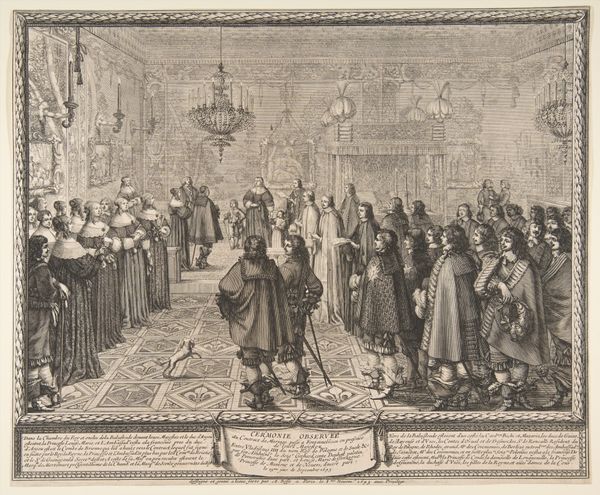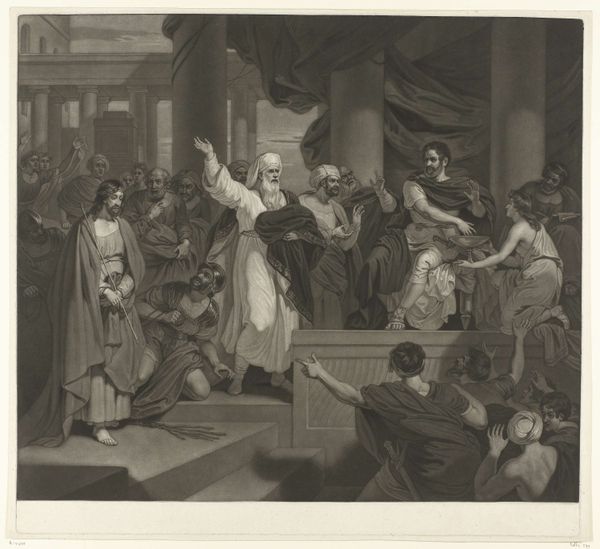
print, engraving
#
narrative-art
# print
#
figuration
#
historical fashion
#
romanticism
#
history-painting
#
engraving
Dimensions: height 165 mm, height 257 mm
Copyright: Rijks Museum: Open Domain
Editor: This engraving, entitled "Luther verdedigt zijn stellingen" (Luther Defending His Theses), likely created between 1822 and 1845, presents a scene brimming with figures, seemingly caught in mid-dialogue. I'm particularly drawn to the composition; it feels very staged, almost theatrical. What stands out to you as you examine the print? Curator: The theatricality you observe is germane to its effect. The use of light and shadow structures the composition, immediately drawing the eye to Luther himself. Notice how the engraver masterfully employed chiaroscuro, a strong contrast, not to merely depict but to highlight the dramatic tension of the moment. Note the texture created through the meticulous linework, which articulates form and depth. The historical costumes, while adding context, function also to denote social standing within the pictorial space. Editor: The high contrast is something I missed on the first pass, as the gray tone felt uniform. I guess that pulls the scene forward and increases that sense of dramatic tension. Is there significance to all the observers packed behind Luther? Curator: Consider how the artist utilizes spatial organization. The compressed figures behind Luther create a sense of depth, yet they also act as a compositional anchor, directing focus to the main figures in the foreground. The placement suggests a collective judgement, a silent pressure augmenting Luther's visual significance. Look closely at the interplay of vertical and horizontal lines created by the architectural details. Do they enhance or diminish the thematic strength? Editor: I now see that those background figures work as a wall. What I had considered to be a somewhat mundane illustrative work appears now as a meticulously assembled network of shapes and figures creating drama. I suppose, that after analyzing those details I’ll start to notice them everywhere else!
Comments
No comments
Be the first to comment and join the conversation on the ultimate creative platform.
